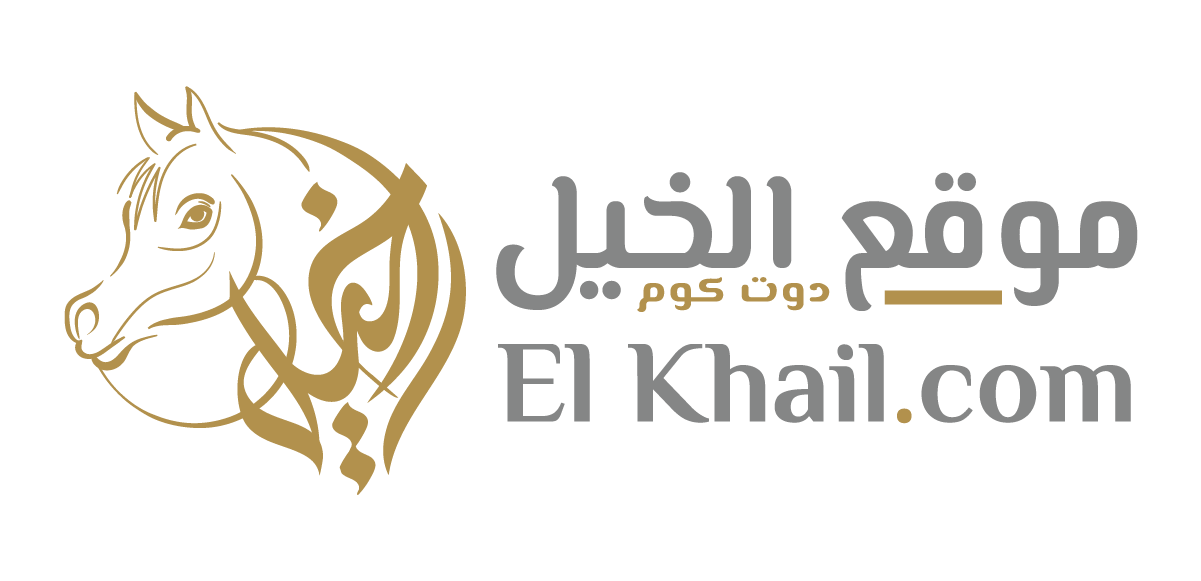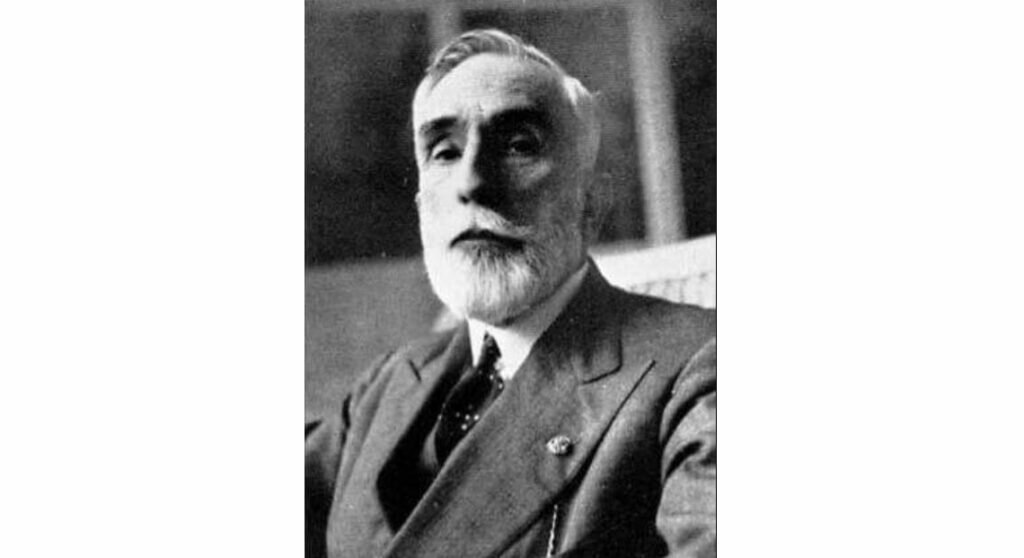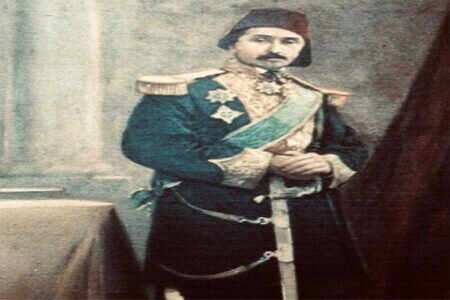Prince Muhammad Ali Tawfiq is considered the most author of the purebred Arabian horse, and he is the one who preserved his heritage almost completely, as he authored many books covering all aspects of that field, whether its lineage, types, methods of breeding and improving it, or treating it, and others. Regarding the horse industry.
Prince Muhammad Ali Tawfiq was born in Cairo on November 9, 1875 AD. Prince Muhammad Ali Tawfiq’s lineage is directly related to Muhammad Ali Pasha, the governor of Egypt, and bears his name, preceded in chronological order by his father and three grandparents: Khedive Tawfiq, Khedive Ismail, Ibrahim Pasha, and Muhammad Ali Pasha, respectively.
His mother was Princess Amina Najia, daughter of Ibrahim Elhami Pasha, Ibn Abbas I, son of Muhammad Ali Pasha, nicknamed “The Mother of the Mohsenin.” He is the brother of Khedive Abbas Helmy II, and his heir. He has three sisters, the princesses: Nazli, Khadija, and Nimatullah.

Prince Muhammad Ali Tawfiq grew up in a family that loves and adores horses. He is the grandson of Abbas Pasha I, the founder of the modern Egyptian horse kingdom.
The fingerprints of Prince Muhammad Ali Tawfiq in the establishment of Al-Zahraa station
Prince Muhammad Ali Tawfiq had clear fingerprints in establishing the Al-Zahraa station for breeding Arabian horses, as he gifted the Royal Agricultural Society when establishing the Department of Horse Breeding the following mares:
Rizqiya on 6/1/1914 AD.
Doha on March 19, 1919.
Umm Dalal on 3/19/1919 AD.
Dalal on February 5, 1932 AD.
After that, the association decided to buy all that was offered to it from the purebred mares that were bred in the stables of Prince Muhammad Ali Tawfiq; In order to be able to increase production and supply the branches of the talukah with the necessary bullets, she bought:
The skilled is unique in 1921 AD.
Bride on 12/4/1922 AD.
Beautiful play on 6/8/1922 AD.
Saadeh on 3/5/1930 AD.
The Agricultural Society also bought a group of males from him; To be used in preying on mares, as well as for sending them to warehouses in the provinces for the improvement of offspring:
Ghazal on 12/21/1922 AD.
Beautiful on February 5, 1923 AD.
Hadban on February 5, 1924 AD.
Jerboa on 5/2/1924 AD.
Pilot on February 5, 1924 AD.
Selfie 5/2/1924 AD.
Planet on 5/2/1927 AD.
Congratulations on 5/2/1927 AD.
Lightning on 2/2/1928 AD.
The Agricultural Society also used the following male horses to prey on mares:
Beautiful horse Manial El Saqlawy walls.
The horse Mabrouk Al-Kahilan the fun.
The horse Rabdan Kahilan Rabdah Kahilan old man.
Horse Samhan Saqlawy Walls.
The horse Hadban Al-Kahilan Al-Murah.
He also donated two horses to the association:
Ibn Halaby “Fares” on 6/1/1918 AD.
Rabdan in December 1921.
The divorcees of Prince Muhammad Ali produce the greatest horses of Al-Zahra station and the world
The divorcees that Prince Muhammad Ali Tawfiq donated to the Zahra station were the most important source of producing the greatest horses. For example, the Rabdan horse produced the legendary horse, Ibn Rabdan, the most beautiful horse at that time. He is the father of the distinguished horse, Shahloul, who enriched the blood of Egyptian horses. Among his most famous productions are the mare Umm al-Saad, the mare reel, the mare Minya al-Noufs, the mare with amaranth, and Abu al-Hasan Hamdan, the owner of the famous story, which Ahmed Pasha Hamza named Hamdan’s stables on his farm out of love and affection for him. The Agricultural Society also gifted the horse Hamdan to King Farouk.
The horse “Jamil” also produced the horse “Mansour” the product of heroes and the most important divorcees that changed the shape of the horse in the world, such as the horse, the founder of the generation of mares, the strong mothers “Sheikh of the Arabs,” as well as the horse “Nazir” the most famous horse in the world, and he has his sons everywhere, There is no lineage certificate without it at the present time.
And if we look at the horses that were presented as gifts to governments or kings and princes, we will find that they are not without the blood of Prince Muhammad Ali Tawfiq’s horses, and the gifts of kings and princes are all precious. This is evident in the following horses that were given gifts:
Hadab: The father is Ibn Rabdan and the mother is the daughter of Hadaba. He was given a gift in 1938 AD to the Government of Sudan.
Dahman: Father Ibn Rabdan and mother Saada, gifted to the King of Iraq in 1940 AD.
Al- Fajr : Father Mansour and mother Sabah, gifted to Prince Abdullah, Emir of Transjordan in 1940 AD.
Ibn Mansour: Father Mansour and mother Bint Resala, gifted to King Abdulaziz, King of Saudi Arabia in 1939 AD.
Prince Muhammad Ali Tawfiq’s horses have a clear imprint on the production of Al-Zahraa station. His divorcees brought a touch of beauty and strength. And the effect of the blood of Prince Muhammad’s horses on Tawfiq is clear in the production of many horses.
Prince Muhammad Ali Tawfiq believed that the “descent certificate” that does not reflect the beauty and strength of a horse is just a piece of paper.
Prince Muhammad Ali raises Al-Zahraa station to the top and documents the lineage of horses
The indisputable fact is that the horses of Prince Muhammad Ali Tawfiq changed the shape of the horse, raised the Zahra station to the top, and made it preserve it for many years, and the horse breeding program of the Royal Agricultural Society became one of the most powerful and distinguished horse breeding programs in the world, and it has various special qualities in beauty and structures. It is also a source of interest in the world for its quality and shape. It has added a lot of experience to educators, either directly or indirectly.
Prince Muhammad Ali Tawfiq was a reason – albeit indirectly – in preparing official genealogical records for horses for the first time in Egypt, because after a foreign body rejected the certificate of the horse “Saadoun” lineage extracted from the records of Prince Muhammad Ali Tawfiq, the Director General of the Agricultural Society presented In 1932, a memorandum to the Society’s Animal Breeding Committee on the importance of establishing a register of Arabian horses approved by the government; Until all governments and bodies recognize the certificate given about registered Arabian horses, and accordingly the Royal Agricultural Society registered special books in the mixed court, and it was implemented from the first of November 1933 AD.
Treasures of Prince Muhammad Ali in horse culture
The Prince presented to the Arab Library a large number of books and letters in the field of horse breeding, which truly represent a unique wealth of information based on practical experience that lasted more than 35 years in this field, and represent important references for breeders, scholars and researchers in horse affairs.
The reader of these books has nothing but to look at them with the respect they deserve. It was characterized by the accuracy of information, facts and experiences through which Prince Muhammad Ali Tawfiq al-Khail lived in all its affairs, despite his high position at that time, when he was crown prince three times: the first lasted seven years during the reign of his older brother Abbas Helmy II. The second lasted three years during the reign of King Fouad I, and the third lasted fifteen years during the reign of King Farouk. He was also appointed as the guardian of the throne of Egypt until King Farouk reached the legal age.
It is clear from these books and letters that the burdens of the mandate did not prevent him from continuing his mission towards his great love: horses.






